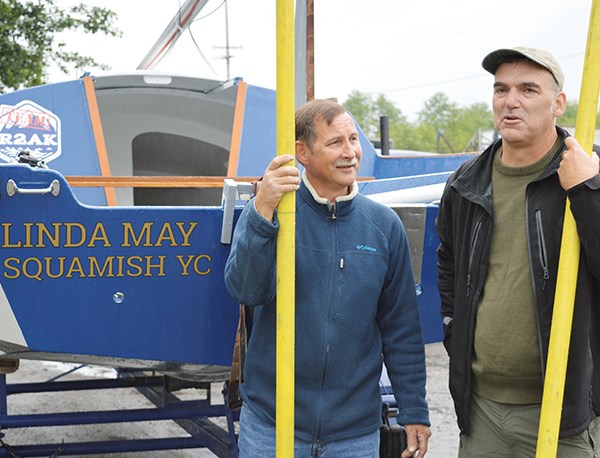Two local sailors leave today on a race north in which many do not finish.
Paul Nilsen and his friend Cam Campbell will be sailing out of Port Townsend, Wash., first stopping in Victoria. From there, they will head up inside Georgia Strait along the coast toward the destination of Ketchikan, Alaska.
They are taking part in a race known as the Race to Alaska, or R2AK for short.
The pair will be racing Nilsen’s boat, Linda May, in the under-20-foot class. He admits it is not the kind of race for which one can train, but he did have some work done on the boat, getting it back from the rigger with a new mast a couple of weeks ago.
One condition of the race is that the watercraft not be motor powered. Beyond that, it can be left up to the competitors’ imagination.
The race, Nilsen says, has attracted one team of nine women in a 20-foot rowboat. Another competitor, an endurance athlete, is planning ro race on a customized, stand-up paddleboard.
“It’s a real un-sail boat race. It’s more like an adventure race,” he said.
Considering some of the watercrafts, it seems the emphasis for many will be on how far they can get rather than actually winning. Last year, 35 teams started and only 15 finished. This year, 65 teams are scheduled to pull anchor Thursday morning.
The event website states upfront that the race might not be for everyone. It is described as the first race of its kind and North America’s longest human- and wind-powered race.
“It’s like the Iditarod, on a boat,” the website states. R2AK takes place over 750 miles (1,207 km). Last year, the fastest boats came in after five days, but Nilsen thinks 10 days is more realistic for his vessel.
“If we get really bad weather, we could be pinned down for a couple of days,” he said.
The wind plays a big part; a strong tailwind would speed up the race.
The two may have to face obstacles including logs or tides, which could have a big effect on how the boat fares.
“Those kinds of tide gates are important for your time,” he said.
Open sections exist north of Vancouver Island but there are also areas like Johnstone Strait, which he called “a long, narrow gateway of water.”
The race was first held last year and ever since, Nilsen, who sailed as a child then returned to the sport six years ago, has dreamed of taking part.
“This is a kind of a bucket list for me,” he said. “I couldn’t get it out of my head.”
He’s the captain of the ship, with friend Campbell along as first mate.
“It’s Paul’s idea,” Campbell said. “I’m the scared help.”
There is some incentive for finishing first – specifically $10,000 nailed to a tree. For second, the prize is a set of steak knives.
There is also a side bet of $1,000 for the first finisher in a boat no longer than 20 feet.
While still new, the race is already getting attention. Nilsen says the website received 11 million hits and The New York Times has written about it.
People can follow online the progress of competitors, whose boats need a tracker and VHF radio. For more info, see r2ak.com.




